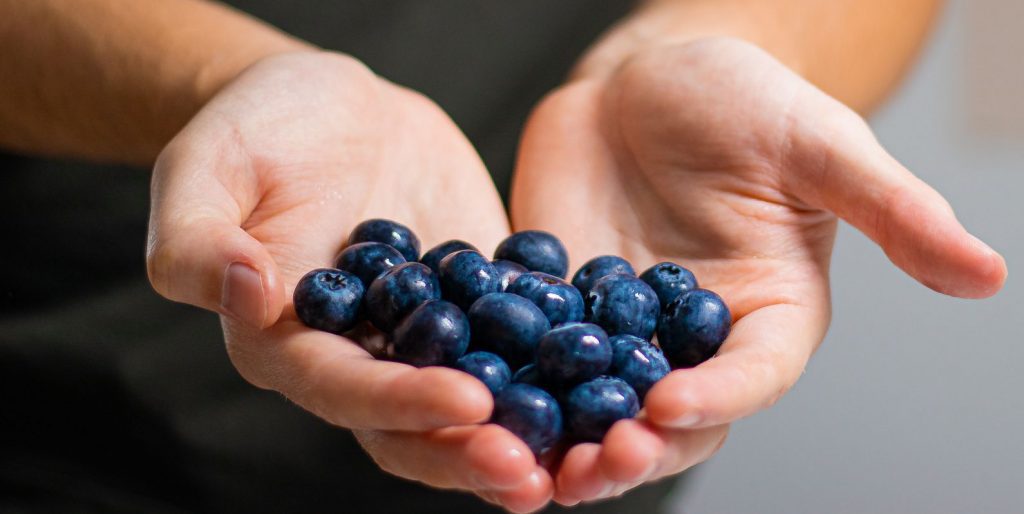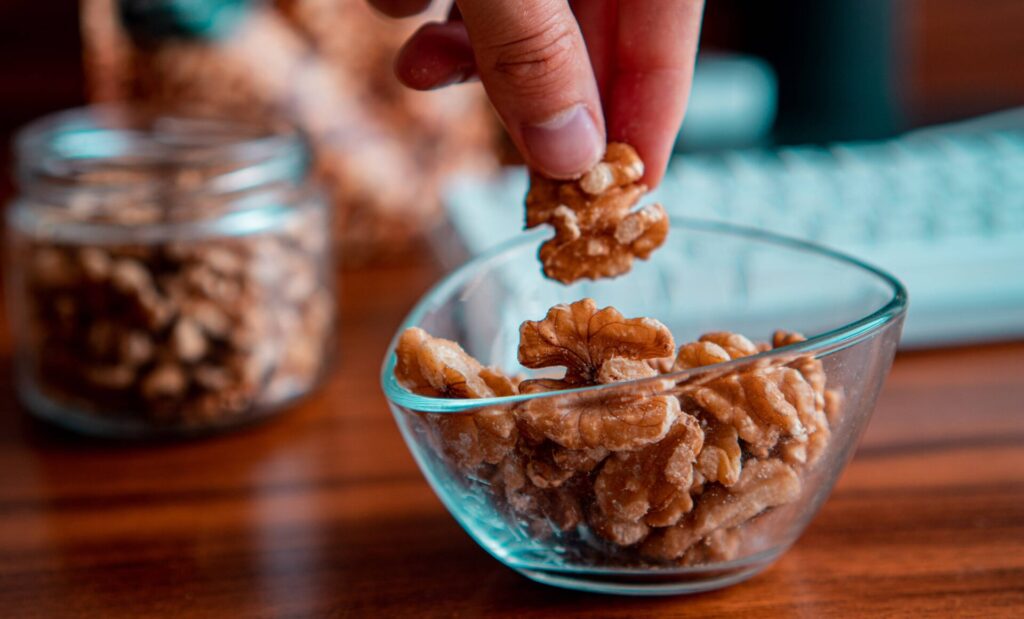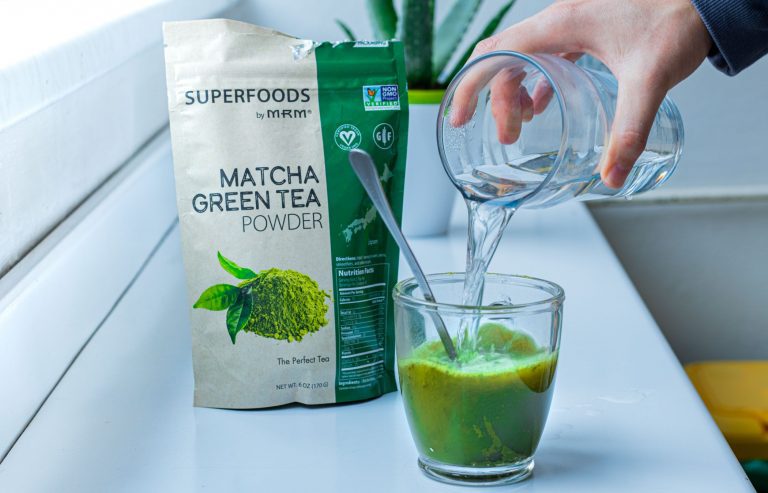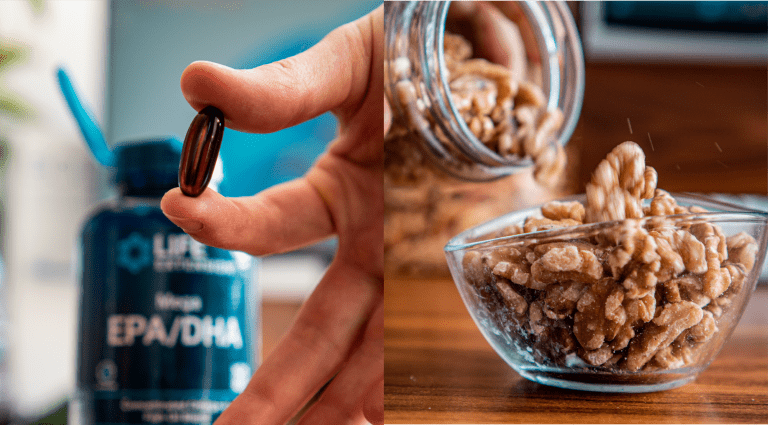8 Nutrient-Dense Foods List & Health Benefits
In a world inundated with dietary trends and fads, the concept of nutrient density stands out as a beacon of nutritional wisdom. Including more nutrient-dense foods is the first step toward creating a healthier diet. For many, instead of focusing on what not to eat, it’s better to focus on incorporating more foods that are packed with nutrients.
We’ll list the top 8 food groups you can pick from, to power up your diet, and explain why nourishment matters for health. At the end we’ll include a few practical swaps you can make in your diet today, to nourish your body.
Nourishment – Focus on What to Eat
Nourishment is the cornerstone of health, providing our bodies with the essential nutrients needed for optimal functioning and well-being.
Lack of proper nutrition, so-called malnutrition is the nutrient deficiency of one’s body. It is mainly a result of undereating or eating foods that lack the proper nutrients [empty calories]. Besides an energy deficit, malnutrition negatively affects the immune system, metabolism, body composition, digestion, heart health, and insulin metabolism. (1) (2) (3)
Empty calories are foods that pack a lot of calories [energy] but provide little value [nutrients] for the body. On the opposite, nutrient-dense foods pack a great amount of nutrients, per the calories they provide.
PRO TIP
The best strategy to nourish our bodies is to incorporate more nutrient-dense foods, such as meat, veggies, dairy, fruits, and nuts.
Healthy Diet – The Place of ND Foods
Calorie equals a calorie is not the best way to look at food, even in the context of weight loss – where macros matter. The reason is, that calories have unique functions in the body. They support your physiological functions, determine the quality of your tissues, the way your brain works, etc.
The point of eating food is to fuel our bodies. Since this fuel helps create energy off of which we live and function, it better be a clean one. According to this, we should aim to derive as many nutrients per the calories ingested.
Considering we set a limit on our caloric intake every day, the goal is to get as many nutrients as we can within that limit. This is done by incorporating more nutrient-dense foods that are packed with vitamins, minerals, amino acids, fiber, and antioxidants. These nutrients serve as building blocks for growth and repair, as well as fuel for energy production and metabolic processes within the body.

Nutrient-Dense Foods List
In this article, we delve into the top eight nutrient-dense food groups, exploring their unique benefits for optimal health and well-being. From vibrant fruits and vegetables to protein-rich legumes and whole grains, these nutrient powerhouses are the foundation of a wholesome and balanced diet.
While nutrition seems quite complex to understand, at baseline, most would profit from incorporating [or swapping to] more nutrient-dense foods in their diet. Just have more veggies, quality meat, eggs, berries, and nuts. It’s quite simple.
Check Out: Anti-Inflammatory vs Inflammatory Foods: 7 Foods to Eat and Avoid
Vegetables
We’ve all heard the phrase eat your veggies, but why should we? Most vegetables are
- high in fiber, which supports digestion and glucose metabolism (4) (5)
- high in minerals, which are important for nerve function, water balance, and bone strength
- low in calories, which is good for weight loss, as it prevents a major problem: overeating
- high in phytochemicals and antioxidants which support health and reduce the risk of numerous diseases (6) (7)
There isn’t such thing as the healthiest vegetable. However, the most nutrient-dense veggies include:
- Cruciferous vegetables: Broccoli, Cauliflower – high in vitamin K, C, folate and sulphurophane
- Green leafy vegetables: Kale, Spinach, Swiss Chart – high in manganese, magnesium, calcium, vitamin A, and numerous antioxidants.
- Carrots and sweet potatoes: high amount of beta-carotene, vitamin A, fiber, and B6 vitamin.
- Asparagus, collard greens, and Brussels sprouts: high amounts of fiber and vitamins [A, C, K], minerals [folate, magnesium, calcium].
Conclusion
Vegetables are a major source of fiber, minerals, and antioxidants in the diet, with low amounts of calories. Cruciferous and green leafy vegetables, along with carrots, asparagus, and Brussels sprouts seem like a great combination to get the rich nutrient profile from veggies.
Meat
Meat is one of the most nutrient-packed food groups, even at a higher caloric count. It packs a ton of essential nutrients, including high-quality protein, zinc, iron, and B vitamins. Animal products often offer a good combination of nutrients that help build, repair, and maintain tissues.
A great example is the fullness of its amino-acid profile which supports muscle growth and repair, combined with key nutrients like (8) (9) (10)
- zinc, which supports immune function and testosterone production
- Iron that helps transport oxygen in the blood
- B-vitamins that are involved in energy metabolism and neurological function
When picking a nutrient-dense meat, we must realize that fat, especially the good type is very rich in what we call – nutrition. This is important, as viewing meat as a source of protein only, and seeking lean cuts as the only option misses the quality fat meat has to offer.
The best lean sources of protein include white meats like chicken and turkey, which pack a good amount of B vitamins, selenium, and choline.
On the fattier side, meats like lamb, and grass-fed beef pack a good amount of protein and CLA – conjugated linoleic acid which is beneficial for weight loss, blood sugar control, and immunity. (11) (12)
Beef liver is another superfood, which like many organs packs a ton of nutrients. It’s one of the richest sources of B12, vitamin A, folate, and minerals like zinc, iron, and copper. (13) (14)
Conclusion
Meat is a great source of protein, B vitamins, zinc, and iron. Besides the lean proteins like chicken and turkey, meat cuts on the fattier side provide a lot of nutrition as well. Such include grass-fed beef, lamb, and organs like beef liver.

Whole Grains
With the rising trends in eating low-fat or ketogenic, the area of carbs is often frowned upon. To a degree, that’s because the overconsumption of simple sugars has led to an obesity epidemic. Instead of demonizing carbs, we need to understand how to incorporate them.
A simple tweak that can greatly improve one’s diet is swapping simple carbs [white rice, bread, pasta] for complex carbs [oats, brown rice, whole-grain pasta]. Unlike refined grains, whole grains offer a more comprehensive nutritional profile.
Whole grains, compared to refined grain contain greater amounts of (15) (16)
- dietary fiber, which supports digestion & gut health, glycemic control, and satiety (16) (17)
- B-vitamins, especially thiamin, niacin, and folate which are essential for energy and brain function
- essential minerals like iron, magnesium, phosphorus, and zinc, which support numerous physiological functions
Whole grains are lower GI foods, which stands for glycemic index. The main pain point that complex carbs solve relative to simple carbs is how fast glucose spikes in the blood after consumption. The lower the GI, the lower the glucose spike. This prevents energy crashes, sharp insulin increases, and overeating, which in turn improves glycemic control. (18) (19) (20)
Incorporating a variety of whole grains into your diet, such as oats, brown rice, barley, quinoa, and whole wheat helps diversify your nutrient intake.
Additionally, swapping white bread for a whole grain is better. The same is true with tortillas, cereal, or pasta. Additionally, pasta lovers could indulge in a variety of healthier kinds of pasta made from spinach, lentils, or chickpeas.
Conclusion
Whole grains are a healthier version of carbs. They’re packed with fiber, B vitamins, and numerous minerals, plus the GI index is lower which improves glycemic control. healthy complex carbs to include more of are oats, barley, quinoa, brown rice, and whole grain versions of pasta, bread, or tortilla.
Eggs & Dairy
Eggs and dairy products are prized for their nutrient density, providing a wealth of essential nutrients in a relatively small package.
Eggs, in particular, are considered one of nature’s perfect foods, containing high-quality protein, vitamins, minerals, and healthy fats. Additionally, eggs are an excellent source of complete protein containing all nine essential amino acids.
They are also rich in
- fat-soluble vitamins such as vitamins A, D, E,
- B-vitamins, such as vitamin B12, riboflavin, and folate
- minerals like iron, phosphorus, and selenium
- choline, a nutrient important for brain health and development
Dairy products, including milk, yogurt, and cheese, are high in calcium, and essential for bone health and muscle function. Dairy also provides high-quality protein, vitamins (such as B vitamins and vitamin D), and minerals like phosphorus, potassium, and magnesium. Probiotic-rich yogurt contributes to gut health by promoting the growth of beneficial bacteria and aiding in digestion.
Conclusion
Dairy is a great source, of protein, minerals, and probiotics. Pick healthier dairy products like plain yogurt, cottage cheese, milk, Greek yogurt, and Kefir.

Berries
Fruits are the second most preferred choice for many, fitting the healthy foods narrative. However, many high-GI fruits can lead to overconsumption of sugar. So, the general advice to eat more fruit to be healthier, may not be the best.
However, you can hardly go wrong with berries. Berries are a subset of fruits that have a low glycemic index, scoring below 40. This makes them a healthy option, as they won’t spike blood glucose so rapidly.
Besides, berries pack a ton of nutrients, particularly antioxidants – which are great for reducing inflammation and supporting overall health and well-being. This is associated with longevity and reduced risk of chronic diseases.
Strawberries, blueberries, and blackberries – are loaded with vitamin C, flavonoids, and fiber. This makes them a great choice for managing blood sugar levels, weight loss, and heart health.
Additionally, due to the high fiber they contain, berries are incredible for promoting feelings of fullness. Since they’re sweet, it’s the best natural sweetener to add to your oatmeals or shakes to support weight loss.
Studies have also suggested that regularly consuming berries may have a range of health benefits, including improved cognitive function, reduced risk of age-related cognitive decline, and enhanced cardiovascular health. (21) (22) (23) (24)
pro tip
Fresh or frozen, just add more berries to power up your dessert. Whether it’s a cake, oatmeal jar, or a pancake – adding berries boosts antioxidant content, making your dessert a little bit healthier.
Seafood
Another Mediterranean option is seafood. It encompasses a diverse range of aquatic animals like fish and shellfish, which offer unique nutritional benefits. Generally, seafood packs a ton of omega-3 fatty acids which are great for heart health and brain function. It provides high-quality [complete] protein while being low in cholesterol and saturated fat.
Salmon is a great option, packing a great amount of omega-3 fatty acids, particularly EPA and DHA which are essential for brain health and act as anti-inflammatory in the body. (23) (24) (25) (26)
Other low-mercury seafood options include:
- Fatty fish like sardines and mackerel, which are high in vitamin D, essential for bone health, immune function, and mood regulation
- Shellfish such as oysters and clams are high in zinc, a mineral that supports immune function, reproduction, and DNA synthesis
- Cod liver oil, an excellent source of vitamins A and D which are vital for eye health, immunity, and regeneration
Avoid frequent consumption of large fish, such as swordfish, king mackerel, shark, ray, mackerel, and bluefin tuna, due to their high mercury content. Instead, incorporate more omega-3-rich options and smaller [shell]fish like sardines, salmon, and oysters.
Fun Fact
The aphrodisiac properties of seafood lie in its high amounts of zinc, which is believed to help balance sex hormones and boost libido. The legend has it that Casanova ate over 50 raw oysters a day to achieve such a phenomenal performance.

Nuts & Seeds
Nuts and seeds are another category that can add crunch to your dessert, or be your next healthy snack option. It packs a ton of nutrients, particularly healthy fats and a ton of fiber.
As a great source of healthy fats, nuts and seeds pack both monounsaturated and polyunsaturated fats, such as omega-3 and omega-6 fatty acids. These fats are beneficial for heart health, as they can help lower cholesterol levels, reduce inflammation, and support brain function. (27)
Besides healthy fats, nuts, and seeds are a great source of plant-based protein for vegans and vegetarians. They’re also rich in fiber which supports digestion, and gut health and assists in weight loss due to their satiety-stimulating properties (although it’s high in calories). (28)
On the nuttier side, we tend to gravitate towards walnuts most. It’s the highest omega-3 nut, great for brain function and heart health. (29) Cashews can add a good creamy texture, they’re pretty fatty and rich in minerals like copper, zinc, and magnesium.
Almonds are also a great choice, however, oxalates can be a problem. A good tip is to soak them and remove the skin, especially if one is sensitive to oxalates or has a history of kidney stones in the family. Or just roast them, this reduces oxalates by >80%.
Flaxseeds, flaxseed oil, and chia seeds are also packed with omega 3’s [and fiber], while pumpkin seeds shine in the area of minerals, containing high amounts of magnesium, iron, and zinc.
Conclusion
Adding nuts or seeds to a dessert can boost its nutrient profile. Consider adding some almonds and cashews to your cakes or pies, and some flaxseeds and chia seeds to your oatmeal. Your brain will thank you later.
Beans & Legumes
Like whole grains, beans, and legumes are a healthier type of carbohydrates. They’re a rich source of plant-based protein, great for vegans and vegetarians.
Beans and legumes contain high amounts of dietary fiber, both soluble and insoluble which improves digestion, and gut health and increases satiety. In comparison to simple carbs, they help keep stable blood glucose levels and prevent overeating.
Additionally, they’re quite nutrient-dense, loaded with vitamins and minerals such as folate, iron, magnesium, potassium, and zinc, which are vital for overall health and well-being.
Instead of white bread, pasta, and rice, you can swap for some lentils, peas, chickpeas, pinto beans, black beans, or red kidney beans. Also, pasta made from lentils can be a healthier alternative, as it contains more complex carbs, and has a lower GI score.
Conclusion
Beans and legumes are a great source of complex carbs, which is a great alternative to simple and refined carbs. They are a great source of fiber plant-based protein, and numerous vitamins and minerals as well.
4 Healthy Swaps to Improve Your Diet
We all know that apples are better than doughnuts, so why is eating healthy so hard? While the topic of nutrition, especially looking from a scientific lens can be quite complex, many people can profit from just covering the basics.
If we eat by the rules of what we know healthy is, most of us would drastically improve our diet. Without overcomplicating stuff, delving into what MCTs are the best, or what type of lentils should I get, are frozen blueberries healthy at all…. etc., focusing on building the core of what a healthy diet is, covers the 80% of a healthy diet.
So, here are some practical swaps for a cleaner, healthier, and more nutritious diet:
- Swap white, simple, or refined carbs [rice, bread, pasta] for complex, non-refined carbohydrates like whole grains [quinoa, barley, brown rice, whole grain pasta, bread], beans, and legumes.
- Increase the intake of high-quality protein with a complete amino acid profile, such as is found in grass-fed beef, eggs, chicken, and lamb. For plant-based options include nuts, seeds, and vegan protein blends.
- Increase the intake of healthy fats, particularly omega 3 which have been shown to aid in inflammation, brain health, and anti-aging. Incorporate fatty fish like salmon and mackerel, cod liver oil, olive oil, flaxseed oil, and eat more avocados.
- Add more antioxidants to your diet by increasing the colorfulness of your plate. Include green leafy vegetables, berries, spices, and cocoa to your plate to boost the antioxidant content on your plate.

How to Eat Nutrient-Dense Foods, Practically
To eat healthy, we must make the consumption of such foods easy, practical, and convenient. Why? Because most of our unhealthy decisions are due to a lack of preparation. In the workplace, under a ton of stress, unprepared, you’re hangry, guess what you’ll grab first? Whatever’s in your sight. And that’s usually not salmon and berries, is it?
While most of us have this idea that eating healthy is not delicious, or it’s extremely complex and hard, for many it’s not. We’ve all satisfied our appetite, enjoying a healthy, home-cooked meal multiple times. It’s about asking ourselves, how can we make it sustainable, frequently?
For some, the answer is meal prepping, for others it’s buying a blend of superfoods to through in a shake, for others is getting rid of the junk [sugar] in the house. Pick your horse ladies and gentlemen, your body deserves to be nourished. If health is a priority, we must find a way.
Most can distill their diet into 5 simple meals. What we eat on a daily determines what we’re made of, how healthy we are, how we function, and ultimately, our energy levels. If you can create 5 simple, healthy, and nutrient-dense meals that make up the bulk [80%] of your diet, that’s it. You just solved the complex diet formula.
Conclusion
- Nutrient-dense foods are foods rich in nutrients, relative to their calorie content. It’s the antidote to empty calories, which are foods that provide low nutritional value for the calories they contain.
- Examples of nutrient-rich foods are meat, seafood, vegetables, whole grains, beans, legumes, berries, nuts, seeds, eggs, and dairy. These contain a wide variety of nutrients like vitamins, minerals, fiber, antioxidants, and healthy fats.
- Improving one’s diet should emphasize increasing the intake of high-quality protein and healthy fats while reducing simple [refined] carbs and instead, swapping them for complex, fiber-rich carbohydrates.








